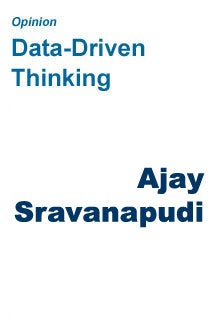 “Data-Driven Thinking” is a column written by members of the media community and containing fresh ideas on the digital revolution in media.
“Data-Driven Thinking” is a column written by members of the media community and containing fresh ideas on the digital revolution in media.
Today’s column is written by Ajay Sravanapudi, CEO at LucidMedia.
Demand Side Platforms (DSP) are hot! I can tell by the huge agency interest, and even more eager venture capitalists anxious to get in on the latest craze. Traditional ad networks and newfangled technology platforms are declaring themselves to be DSPs. Others who did much of the evangelical spadework for DSPs appear to be stung by the sudden rush. There is now an attempt to define a “true DSP”. At this stage, a “true DSP” as defined by a list of features serves little purpose and is as much a disservice to the industry, as it is disconnected from reality. In fact, many of the current DSP competitors—those with the most significant solutions already in-market—are successfully violating that definition of a “true DSP” to the benefit of their agencies partners.
The truth is that a “fully self-service DSP” would be far too disruptive to most agencies at this early stage. There are far too many levers, knobs and buttons in a DSP robust enough to deliver the optimum cross-section of pacing, performance, and price for an agency to take on today. They range from mundane tasks like dealing with objectionable impressions and buys from non real-time sources to more arcane optimization tasks, RTB source integration, bidding strategies, discrepancy management, and post-campaign reconciliation.
As my own company has learned by providing DSP services to agencies over the past year, agencies are still not appropriately staffed to be full-fledged buy-side networks yet. Media buyers are already over worked and stretched to the limits and are looking for a DSP to do more with less. That means automating many tasks but also off-loading just as many (if not more). A managed service that facilitates knowledge transfer and leads to a semi- self-service approach is far more realistic today. The reality of the situation is simply not that black and white! At the end of the day what an agency really wants is to know what works for their clients and how to repeat those outcomes in the future. At least that’s been our takeaway. They want the data behind the performance, the audience segments that engage with their message effectively, and the easy-to-pull levers that will let them do it again on the next campaign. They want no more and no less.
It is also important to recognize that many of the most important DSP offerings are coming from the networks where the technology has matured and has been thoroughly field tested. Indeed, my company falls into this category. The networks already have the relationships and business models in place to support the early adopters. Real-time bidding is an excellent example of this necessity. To get multi-source RTB going at scale going takes a significant amount of relationship building and technical heavy lifting and many of the networks have already invested heavily in this. Discounting the network players with a single stroke, and leaving it all up to the agencies, is doing the industry a massive disservice.
There are many other aspects of a “true DSP” that were missing from the recent list as well. Our experience has been that no DSP should leave home without staples like universal frequency capping across exchanges and publishers, objectionable content filtering for brand safety, some sort of automated optimization for CTR, CPA, or eCPC and the ability to plug in others, an advanced and robust ad server capable of propagating campaign changes in minutes, seamless targeting of audiences with native and 3rd party data, and granular content targeting independent of site or section.
Only time and buyer requirements will define the “true DSP” and decide if networks and DSPs can truly coexist. The industry needs time to shake it all. The sector is too young to define the full product category or for one player to define it completely. I will conclude with a heretical prognostication – the next generation of ad network will be a hybrid DSP solution with a service layer.
Follow LucidMedia @lucidmediaVIP and AdExchanger.com (@adexchanger.com) on Twitter.












